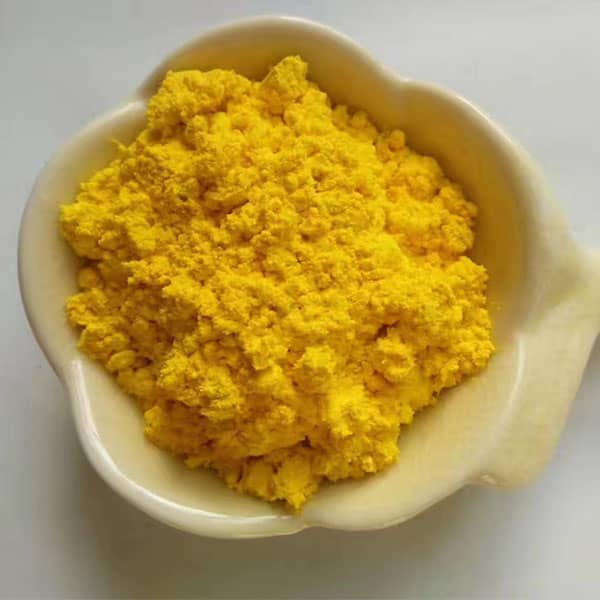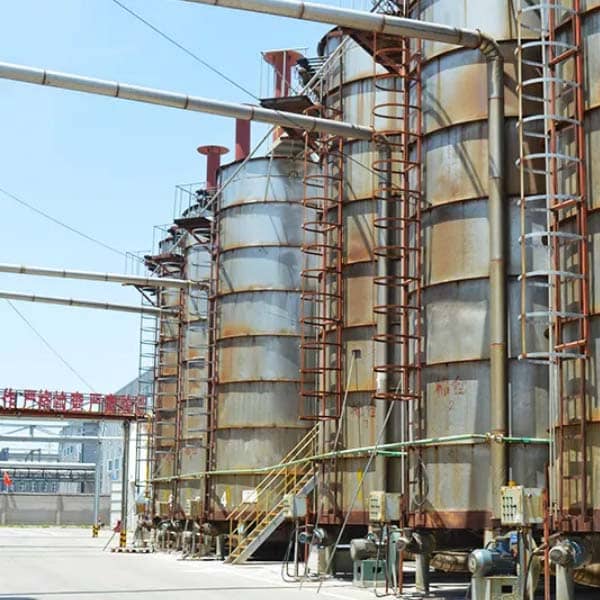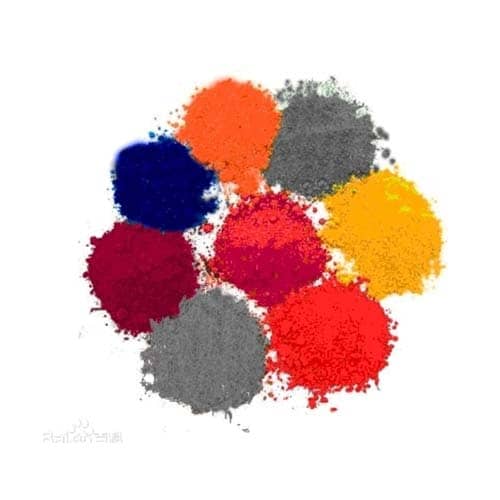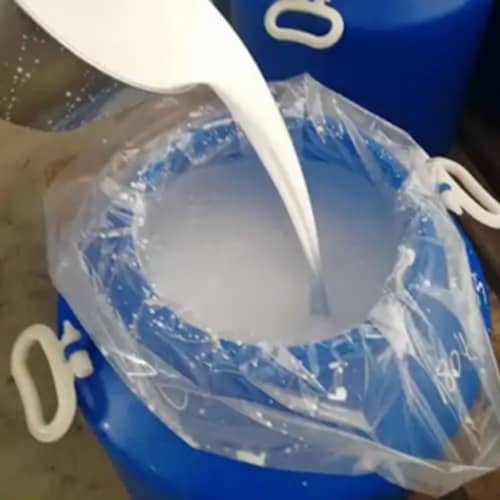First-class Chrome yellow manufacturer all over the world
Lead chrome yellow pigment is an important inorganic coloring pigment. It has perfect pigment application performance, relatively low price and complete color range. Therefore, it is widely used in coatings, plastics, rubber, ink, leather and other industries.
Judging from the statistical analysis of the annual production volume of lead chrome yellow pigment in China, its production maintains a relatively stable development trend. Currently, there are certain application markets in both developing and developed countries. China’s lead chrome yellow manufacturer produced pigment in 2011 was approximately 60,000 tons.
This article collects relevant research from some domestic scholars and experts, briefly introduces the development history of chrome yellow, some chrome yellow manufacturer synthesis methods and process production methods, and uses the knowledge of safety theory to conduct a quantitative and qualitative analysis of chrome yellow.
Introduction to chrome yellow
Lead Chromate pigment (English name Lead Chromate), pigment index number: Pigment Yellow 34 C.I.Pigment Yellow 34; CASRN: 7758-97-6. The molecular formula is xPbCrO4 yPbSO2 Z (the values of x and y change with the color of the lead chrome yellow pigment, Z is an inorganic or organic surface treatment substance), and the relative molecular weight is 323.22.
Its properties are yellow monoclinic or orthorhombic crystalline yellow powder, with a relative density D15 of 6.12 and a melting point of 844°C. Insoluble in water, solvents and acetic acid, soluble in strong alkali or inorganic strong acid.
Properties and applications of chrome yellow
Chrome yellow pigment usually contains 53% to 64% lead and 10% to 16% chromium, and has the chemical and physical properties of lead chromate and lead sulfate. Lead chromium yellow is soluble in strong alkali liquid and inorganic strong acids, insoluble in water and oil, and is toxic.
The pigment has high tinting power and strong hiding power. It will not pulverize in the atmosphere and will darken when exposed to sunlight. Chrome yellow is sensitive to hydrogen sulfide gas and will easily turn black when exposed to hydrogen sulfide. But when inert metal oxides precipitate onto lead chromium yellow particles, their solubility in acids and alkalis, and the decolorization effects of hydrogen sulfide and sulfur dioxide, can be reduced to a minimum.
The color of lead-chromium yellow varies with the raw material ratio and manufacturing conditions. The sulfate in the mixed-phase crystal partially replaces the chromate, which gradually reduces the tinting power and hiding power, but it can produce important greenish-yellow lead. Chrome yellow.
Chrome yellow pigment is a brightly colored yellow pigment and has the advantages of requiring a small amount of base material, good dispersion, strong hiding power, solvent resistance, heat resistance, low price, and large production volume, so it is widely used. .
The paint industry is the main user of lead chrome yellow. It is also used in ink, plastic, watercolor, oil paint, pigment and other industries manufacturer, and is also used for coloring colored paper and rubber products manufacturer. About 65% of the total production of lead chrome yellow is used in the coating industry, 20% is used in the plastics industry, and other industries such as ink and rubber are about 15%.
Chrome yellow manufacturer: Industrial production of chrome yellow
- Water-soluble lead salts and water-soluble chromates are the main raw materials for chrome yellow manufacturer manufacturing lead-chrome yellow pigments.
- The various manufacturing routes of lead chromium yellow are mainly formed by using different types of lead salt raw materials, among which the lead acetate and lead nitrate routes are the most common.
- Chromate is generally sodium dichromate, which has high solubility and lower price than potassium dichromate.
- Lead salts are mixed with sodium dichromate solution to form a precipitate. If the precipitate solution contains sulfate, lead sulfate and lead chromate are formed in the form of a miscible pigment.
- After stabilization, the pigment is filtered out and post-processed.
- The post-processing procedures of lead chrome yellow pigment include washing, filtration, drying, crushing, color matching, packaging, etc.
Chrome yellow manufacturer lead nitrate method
In chrome yellow manufacturer large-scale production, lead or lead oxide is used as raw material, reacted with nitric acid in a preparation barrel to produce lead salt, and then a specified amount of sodium dichromate is quickly added within 15 to 17 minutes to cause a precipitation reaction with the lead salt. .
It is generally believed that the cost of using lead nitrate as raw material to produce lead chrome yellow is slightly higher, and the product quality is better. In particular, the light resistance is slightly better than the lead acetate method, which is the most commonly used production route in chrome yellow manufacturer. The reaction formula is:
Pb(NO3)2 Na2Cr2O7 H2O→PbCrO4↓ 2NaNO3 2HNO3 (1-1)
It can be seen from the reaction formula that free nitric acid is produced after precipitation occurs. Since nitric acid is a strong acid, the pH value of the mother liquor drops sharply after precipitation occurs, which causes part of the lead chromium yellow solution to be redissolved and the color gradually turns darker. Therefore, it is impossible to obtain satisfactory products by directly using sodium dichromate solution to precipitate lead chromium yellow from lead nitrate solution.
Chrome yellow manufacturer effective measures usually adopted are to neutralize sodium dichromate in advance, or to add soda ash to the lead nitrate solution to pre-generate part of lead carbonate, so as to control the pH value after the precipitation reaction to make it close to neutral. In this way chrome yellow manufacturer can get the chrome yellow that we are satisfied with.
Through different processes, chrome yellow manufacturers can produce different colors of chromium yellow.
Bright yellow monoclinic crystal. Density6.12g/cm3,Melting_point844℃. Insoluble in water, oil and acetic acid, soluble in strong alkali and inorganic strong acid. It turns black when exposed to hydrogen sulfide and turns orange-red when exposed to alkali.
Strong tinting and hiding power.
Cannot be used together with lithopone and ultramarine. poisonous.
The color light varies with the ratio of raw materials and preparation conditions, and there are five types: orange chrome yellow, dark chrome yellow, medium chrome yellow, light chrome yellow, and lemon yellow.
- Lemon chrome yellow [3PbCrO4·2PbSO4+Al(OH)3+AlPO4]. The lead chromate content is not less than 50%, the color is bright, with a green tint, and the paint has good gloss. It can be mixed with blue pigments to produce bright emerald green, and the color is equivalent to 10G. The light resistance reaches level 4~5. Heat resistance 140℃. Water permeability and oil permeability are level 1. Acid resistance and alkali resistance are level 3.
- Light chrome yellow (5PbCrO4·2PSO4+Al(OH)3+AlPO4]. The content of lead chromate is not less than 60%. It has bright color, strong tinting power and good paint gloss. It can be mixed with blue pigment to make light green. The lead chromate content is higher than lemon chrome yellow. The color is equivalent to 4G. The light resistance reaches level 5. The heat resistance is 140°C. The water permeability and oil permeability are level 1. The acid resistance and alkali resistance are level 3.
- Medium chromium yellow (PbCrO4+PbSO4). The color is pure and the gloss of the paint is good. It can be mixed with blue pigment to make medium green. Lead chromate content is the highest, above 90%. The color is equivalent to G. The light resistance reaches level 4~5. Heat resistance 140℃. Water permeability and oil permeability are level 1. Acid resistance and alkali resistance are level 3.
- Deep chrome yellow (PbCrO4+PbCrO4·PbO). Lead chromate accounts for 85%, with a red color, strong tinting power, and a color equivalent to GR. Lightfastness reaches level 5. Heat resistance is 140℃. Water permeability and oil permeability are level 3.
- Orange chrome yellow (PbCrO4·PbO). It is alkaline lead chromate, the PbCrO4 content is not less than 55%, and the color is orange. The light resistance is good, reaching level 5~. Heat resistance is 150℃. Water permeability and oil permeability are level 1. Acid resistance and alkali resistance are level 3.





